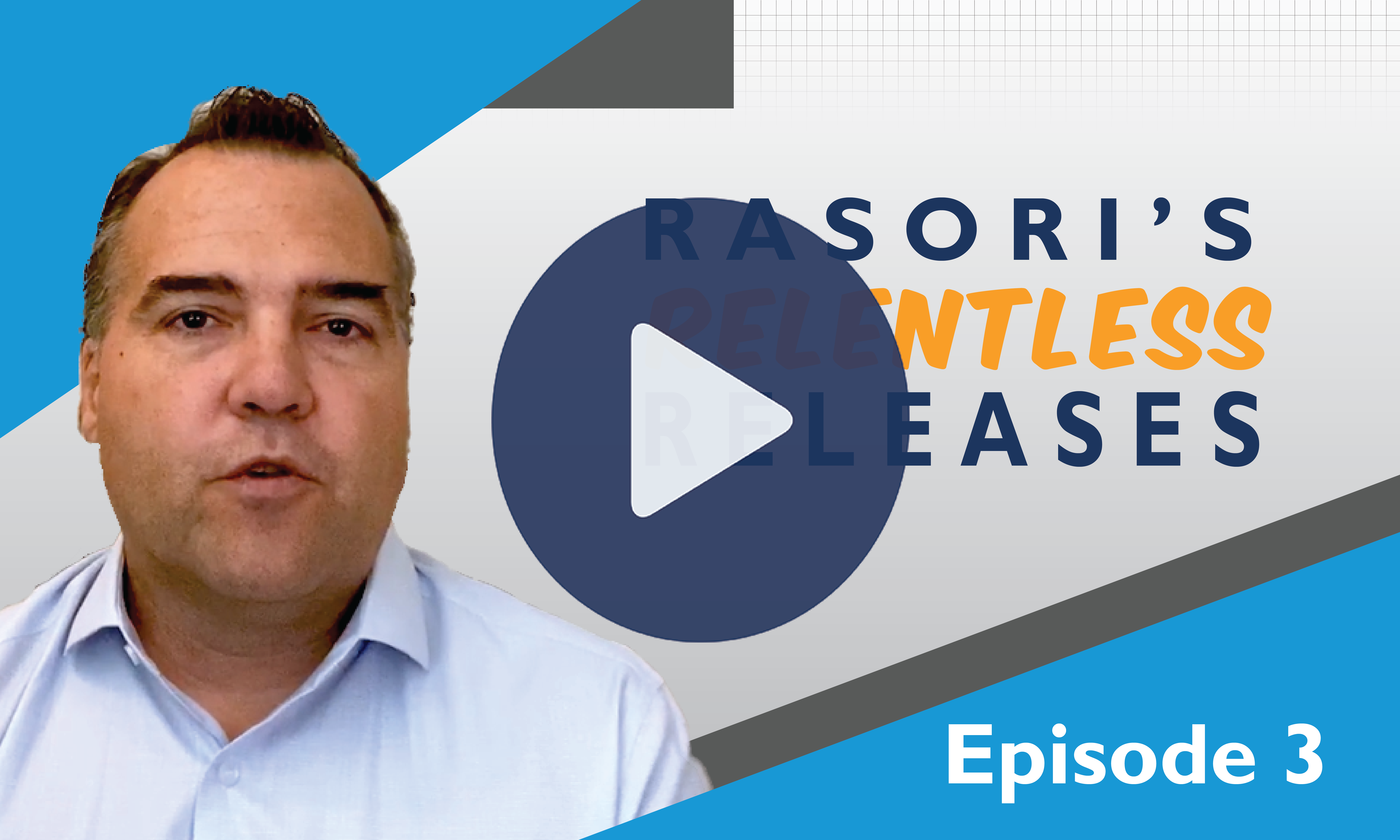
Rasori’s Relentless Releases Episode 3:
Published 09/17/2020
In MCT’s third episode of Rasori’s Relentless Releases, Phil Rasori continues his talk about loan-level hedge costs reporting from the previous episode. If you missed last week’s episode, view episode 2 for an understanding on the basics of loan-level hedge costs.
MCT® is continually optimizing our capital markets software to keep up with the current market space. In an effort to inform you of these real time enhancements this video will review the latest MCTlive! innovations and functionality updates for your benefit. View the episode then join our newsletter to be updated on new releases.
About the Video:
In Episode 3 of Rasori’s Relentless Releases, Phil Rasori continues his demonstration on MCTlive’s new loan-level hedge cost reporting suite from last week's episode 2. This is a high-level look into lock-level hedging cost where he discusses how to navigate the reporting and reviews calculations for hedge costs related to fallouts.
Topics Include:
- Fallout in hedging costs distribution process
- Distributing a weighted average hedge cost across all locks in the analysis
- Rewarding for fallout locks that have been quickly removed from the pipeline and vice versa
Want to stay updated? Join our newsletter to be notified of future releases.

Rasori’s Relentless Releases focuses on technology updates to MCTlive!, MCT’s award-winning loan pipeline management software.
Features include:
- 100% Cloud-Hosted, Web-Based, Real-Time Functionality
- Multidimensional Pull-Through Analytics
- MCT Marketplace loan trading exchange
- Electronic TBA Trading
- Rapid Commit for Agency Delivery
Video Transcript
Hello and welcome to this week’s MCT Live Release Notes summary. This week’s segment will be an extension on last week’s topic of loan level hedge cost reporting. Specifically, we will review our lock-level hedge cost reporting suite which employs an identical calculation but also includes fallout in the hedge cost distribution process. If you have not yet seen last week’s release notes video, I recommend that you watch it prior to this edition, as we reviewed some important basics. Also, as I had mentioned last week, on Thursday we hosted an MCT University webinar that focused entirely on this new reporting suite. Because of the complexity of the calculations and the importance of the required assumptions, if you have not seen that presentation, I would highly recommend that you watch that recording and then contact your MCT trader or client success group representative with any questions.
Before going into the report, I need to quickly review the assumptions that are required for the accurate distribution of hedge costs at the loan or lock level basis.
We first assume that a consistent and responsible hedging strategy is employed with no market timing of hedge positions and relatedly, we assume all that loans in the analysis are equally as lucky or unlucky as the others.
Second, we assume that the pipeline is hedged at a global optimal coverage ratio level.
It is also important to remember that this is a hedge cost report, and as such, in this analysis we decouple the hedge performance from the loan sale performance. In other words, we are only looking at hedge cost and not considering the market performance of the end state loan execution in this analysis.
Finally, the hedge cost figures that are generated can only be used after the analysis period has closed.
Again, in order to use these reports effectively, a thorough understanding of the assumptions and their implications is essential. For more detail, please review last week’s webinar on loan level hedge cost.
Quickly reviewing the mechanics of the loan level hedge cost reporting suite that we covered in last week’s release, we first distribute a weighted average hedge cost across all loans in the analysis. This is the simple back of the napkin calculation that a lot of accounting departments will employ. The limitations of this oversimplified approach are substantial, primarily because market experience is not taken into account. To adjust for this, we compute the weighted average market movement for the population in column I and compare that to the specific loan market movement, which gives us the loan’s market experience in relation to the overall population. This is shown in the ‘Deviation from Mean’ field. It is this field that allows us to make an accurate market weighted hedge cost distribution. We then adjust for the roll cost associated with time in the hedge and arrive at our scaled hedge cost figure. This is the final point in our loan level hedge cost calculation.
Now, as I mentioned last week, this loan level allocation cannot be used for hedge performance purposes because the hedge costs in this analysis are only distributed across funded loans and fallout is not included in the analysis. The good news is that we can include fallout into the calculation using the same methodology and we do so in the Lock Level Hedge Cost report.
Looking at the Lock Level Hedge Cost report for the same sample client and time period, the sum of the hedge costs will be same, however, we are now incorporating fallout records into the analysis which allows us to distribute hedge costs among both funded and fallout locks. Instead of looking at the market experience between lock date and commitment date, for fallout we of course are looking at the market experience between lock date and fallout date. The main benefit of analyzing fallout costs in this manner is it enables you to penalize for fallout in market rallies and reduce cost or even reward for fallout that has experience a market deterioration.
Remember that not all fallout is bad. If the market experience of a given lock is substantially negative, the given lock falling out would actually be profitable for the pipeline.
The analysis also allows you to reward for fallout locks that have been removed from the pipeline in a timely fashion and penalize for those that sat in the hedged pipeline for a long period of time. This is done through the Lock Period Adjustment calculation.
As was the case with the funded loan analysis, by adjusting for both market movement and time duration in the hedge, we are able to incorporate the two primary drivers of fallout hedge cost into our report.
While it is essential to understand the assumptions and limitations of this reporting suite, we are confident that when used correctly, these reports can provide valuable insights into the hedge performance of a given segment of your pipeline.
Again, for more information on our loan level hedge cost reporting please review last week’s webinar and contact your MCT trader or client success group representative with any questions.
This concludes this week’s release notes segment. Thank you for your time and we will be back to you next week.

“It is essential to understand the assumptions and limitations of this reporting suite. These reports can provide valuable insights into the hedge performance of a given segment of your pipeline.”
Phil Rasori, COO, MCT
About the Host:
Phil Rasori, Chief Operating Officer, MCT
Mr. Rasori is a recognized thought-leader in capital markets operations within the mortgage banking community. His areas of expertise include complex financial modeling, computational dynamics, and linear programming for operational optimization. He developed the ground-breaking mortgage pipeline hedging algorithms that form the foundation of MCT’s HALO Program today. He has also pioneered several metrics that have become standard industry parlance, including “beta pull-through” factors. In addition to banking clients, Mr. Rasori has consulted with GSE agencies and the US Government on hedging best practices for community banks. Mr. Rasori has functionally led MCT operations since 2005 and ascended to his current role as COO in 2007.
Mr. Rasori is a graduate of University of California, San Diego, and holds a B.S. in Management Science.




